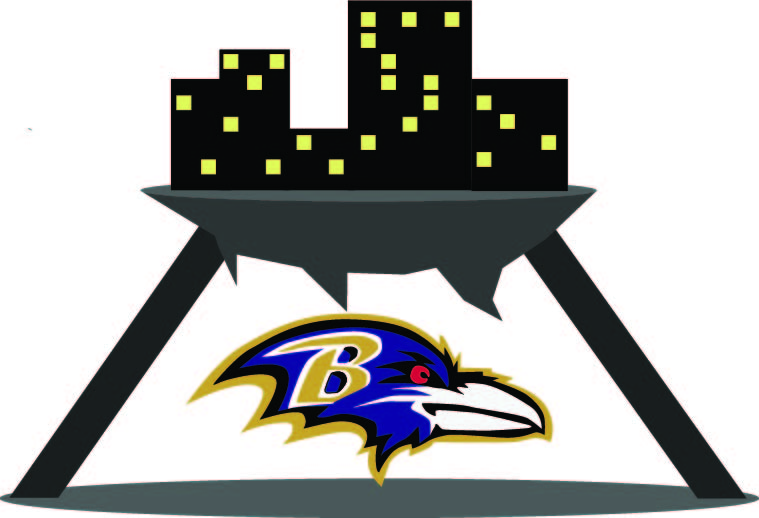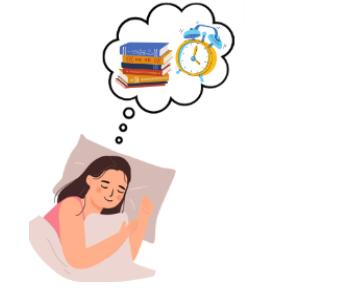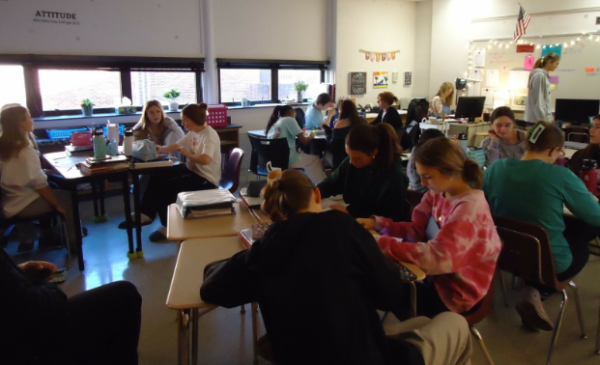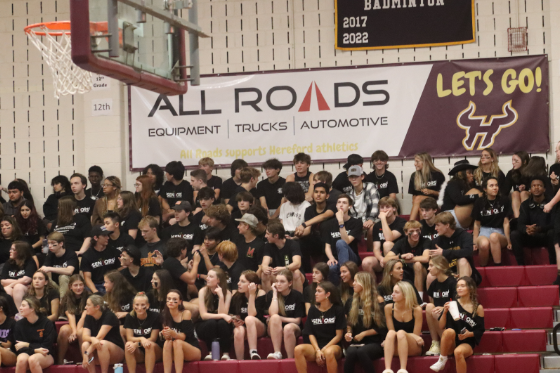The Ravens help to make Baltimore a better place
Yes, our beloved Ravens disappointed us—yet again—in the playoffs. But do we still love them? Of course.
We love them for the Sunday entertainment—the hours spent at M&T Bank Stadium, the tailgating, parading down RavensWalk, watching Real Fan Dan strip down and lead the R-A-V-E-N-S chant, and everything in between. The citizens of Baltimore love them for many other reasons; the Ravens Franchise impacts the city that houses them superficially, as well as economically and culturally.
Since 1996, when the late and great Art Modell moved the Cleveland Browns to Baltimore and renamed them the Ravens, the city has never been the same. The infamous “Move,” which returned the National Football League (NFL) to Baltimore for the first time since the Colts left in 1984, came at a time when the city needed it most.
The 1990s were a time of hardship and pain for the city of Baltimore. The crack epidemic was in full swing, destroying lives and ruining the city’s reputation as the “Greatest City in America” —a slogan many of you have probably seen on a haphazard park bench.
The 12 years without an NFL team allowed the city’s otherworldly consumption of drugs to show through to the rest of the country without being overshadowed by the positive press surrounding a national team, but the reintroduction of a professional football team provided a much-needed morale boost for Baltimoreans citywide.
“There is nothing that can bring all elements of society together more than a winning professional team,” Baltimore Ravens Executive Vice President Kevin Byrne said. “Not a president, another politician, religious leader or celebrity can bring so many people together rooting for a common cause.”
Both the Ravens organization and the players are committed to the city that they play for and represent. Players have started community programs and organizations to better a city ravaged by drugs and crime and the franchise as a whole runs the Baltimore Ravens All Community Team Foundation (RACTF), a non-profit that provides support to other Baltimore area non-profit organizations.
Anthony Levine Sr., defensive back and linebacker for the Ravens, for instance, founded the 4Every1 Foundation, a community initiative that targets at-risk youth and their families in Baltimore and helps them to build a future for themselves through SAT prep, SAT test vouchers, summer football clinics, and a digital literacy collaborative.
Brandon Carr, cornerback for the Ravens, also founded an organization for Baltimore youth. His organization, Carr Cares, was founded to inspire young students to become proficient readers by providing them with learning tools and resources to help them reach their full potential as students and as people.
These are just two examples of the many community outreach programs that the Ravens fund and sponsor for the city. Their dedication and allegiance to this city is just one way that this team impacts Baltimore.
The Ravens franchise contributes tremendously to the economy of Baltimore as well. M&T Bank stadium employs hundreds of individuals to run each gameday smoothly, as well as concerts, collegiate games, and NCAA tournaments. Fans know that tickets have a hefty price and the millions of dollars in income each season generate large taxes to increase revenue for the local government, as well as the state.
It’s more than the federal benefits, though. The sheer existence of the Ravens in Baltimore increases revenue for local businesses. The thousands of fans that travel into the city each weekend have just as large of an impact on the city as the actual players do, generating an estimated $20-$25 million in economic impact, according to Chairman of the Maryland Economic Development Commission Dr. Anirban Basu.
As defensive tackle Michael Pierce tweeted, “The bond we have with this city [is] tremendous. This is a brotherhood, we love each other on and off the football field.”
The Baltimore Ravens are more than just a team, and football is more than just a game. What they have managed to accomplish within a city that is falling apart at the seams shows the desire they have to impact the people that watch them. They may not have won the Super Bowl, but they have left their mark. One bad loss cannot outweigh the wonders that they have done for the city of Baltimore.
“The collective electricity this community created for the Ravens prior to our playoff loss was unlike anything ever seen in this area,” Byrne said. “The loss hurt—and it still does. But the promise of the future is great and the Ravens give area citizens something they can enjoy and brag about.”






